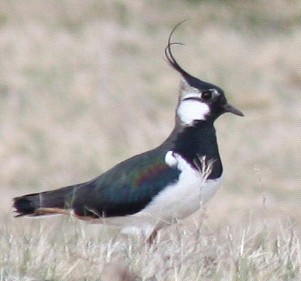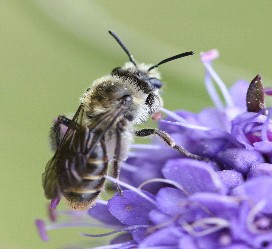Cairngorms National Park Credibility hangs on housing decision
 This
article about the Inquiry into the National Park's forthcoming Local Plan has
been provided for us by our colleagues in the Badenoch and Strathspey Conservation
Group (BSCG). The first key point to the situation they are telling us about
here relates to the timing of changes in legislation. The timing of this particular
Inquiry has meant it was held under 'transitional arrangements' which means
the Reporters' recommendations are not binding for the Cairngorms National Park
Authority (CNPA) ie the CNPA can deviate from the Reporters' recommendations
(see www.cairngorms.co.uk/planning).
If the CNPA do decide to go against the advice of the Reporters then they have
to justify their reasons for so doing. The legislation has since changed however,
and if such an Inquiry was held today, then the CNPA would have had to follow
all ofthe Reporters' recommendations.
This
article about the Inquiry into the National Park's forthcoming Local Plan has
been provided for us by our colleagues in the Badenoch and Strathspey Conservation
Group (BSCG). The first key point to the situation they are telling us about
here relates to the timing of changes in legislation. The timing of this particular
Inquiry has meant it was held under 'transitional arrangements' which means
the Reporters' recommendations are not binding for the Cairngorms National Park
Authority (CNPA) ie the CNPA can deviate from the Reporters' recommendations
(see www.cairngorms.co.uk/planning).
If the CNPA do decide to go against the advice of the Reporters then they have
to justify their reasons for so doing. The legislation has since changed however,
and if such an Inquiry was held today, then the CNPA would have had to follow
all ofthe Reporters' recommendations.
The second key point here is that legally the CNPA is required to give primacy
to the first aim of the National Park. Thus, if it appears that there is a conflict
between the first aim, ie "to conserve and enhance the natural and cultural
heritage of the area", and the other three National Park aims, then the
Park Authority must give greater weight to this first aim. Read on...
The number of new houses proposed to be built in the Park, as detailed in the
Cairngorms National Park's forthcoming Local Plan, has been roundly criticised
as a "substantial overestimate" by the Scottish Government's Reporters.
After taking evidence at last year's Local Plan Inquiry, the two Inquiry Reporters
Mrs Jill Moody and Mr Hugh Begg, concluded: "We are in no doubt that the
overwhelming weight of evidence before us leads to a conclusion that the calculation
of 1,568 housing units as the housing land requirement to 2016 is a substantial
over estimate" and "the housing land requirement is overly generous in
any context, let alone that set by the aims of the National Park".
Some highly controversial Proposals in the Local Plan have been recommended
for deletion or substantial reduction by the Reporters.
These include nearly 200 houses in Grantown on the Mossie meadows, about 80
houses in native woodland at Boat of Garten, and over 200 houses on long-established
farmland at Kingussie. Following this, and this time on the right track, in
March the CNPA Board unanimously rejected the application for housing on the
Mossie, so prospects for this important site are looking good, though long-term
protection is not secure.
| Reporters state they "cannot conclude that proposed
new settlement at An Camas Mor accords with strategic and relevant national
planning policy" and note that "There are landscape and biodiversity
matters that constrain the allocation of land to a significant extent, this
has not been satisfied". |
Arguably the biggest test of whether the National Park is 'fit for purpose'
is the proposed entire new town on Rothiemurchus Estate of 'An Camas Mor', next
to sensitive European conservation sites and wholly within a National Scenic
Area. This 1,500 house Proposal of a supposedly independent settlement, separate
from Aviemore, is currently the subject of a live outline application.
| This proposal has also been described by the Scottish
Council for National Parks as "environmental vandalism". |
 Far
from endorsing An Camas Mor, the Reporters make devastating criticisms of the
controversial proposal. They found a "lack of a demonstrable need" for
the new settlement and state that there remain significant unanswered questions
"about the financial viability of the development".
Far
from endorsing An Camas Mor, the Reporters make devastating criticisms of the
controversial proposal. They found a "lack of a demonstrable need" for
the new settlement and state that there remain significant unanswered questions
"about the financial viability of the development".
Many of the Reporters' conclusions deserve to be welcomed. However, it remains
to be seen to what extent the CNPA accept them. On May 14 the CNPA board are
due to reveal how they are proposing to modify their Local Plan in the light
of the Reporters' recommendations. At stake is the fundamental credibility of
the National Park Authority and the future of highly vulnerable sites that should
be safeguarded for present and future generations.
Images: Lapwing, Vanellus vanellus and Scabious Mining Bee, Andrena
marginata photos both taken on the Mossie by Badenoch and Strathspey Conservation
Group.
NEMT Front Page
| Previous Page | Volume Index Page
| Next Page | Journal Index
Page
Please let the webmaster know if there
are problems with viewing these pages or with the links they contain.
 This
article about the Inquiry into the National Park's forthcoming Local Plan has
been provided for us by our colleagues in the Badenoch and Strathspey Conservation
Group (BSCG). The first key point to the situation they are telling us about
here relates to the timing of changes in legislation. The timing of this particular
Inquiry has meant it was held under 'transitional arrangements' which means
the Reporters' recommendations are not binding for the Cairngorms National Park
Authority (CNPA) ie the CNPA can deviate from the Reporters' recommendations
(see www.cairngorms.co.uk/planning).
If the CNPA do decide to go against the advice of the Reporters then they have
to justify their reasons for so doing. The legislation has since changed however,
and if such an Inquiry was held today, then the CNPA would have had to follow
all ofthe Reporters' recommendations.
This
article about the Inquiry into the National Park's forthcoming Local Plan has
been provided for us by our colleagues in the Badenoch and Strathspey Conservation
Group (BSCG). The first key point to the situation they are telling us about
here relates to the timing of changes in legislation. The timing of this particular
Inquiry has meant it was held under 'transitional arrangements' which means
the Reporters' recommendations are not binding for the Cairngorms National Park
Authority (CNPA) ie the CNPA can deviate from the Reporters' recommendations
(see www.cairngorms.co.uk/planning).
If the CNPA do decide to go against the advice of the Reporters then they have
to justify their reasons for so doing. The legislation has since changed however,
and if such an Inquiry was held today, then the CNPA would have had to follow
all ofthe Reporters' recommendations. Far
from endorsing An Camas Mor, the Reporters make devastating criticisms of the
controversial proposal. They found a "lack of a demonstrable need" for
the new settlement and state that there remain significant unanswered questions
"about the financial viability of the development".
Far
from endorsing An Camas Mor, the Reporters make devastating criticisms of the
controversial proposal. They found a "lack of a demonstrable need" for
the new settlement and state that there remain significant unanswered questions
"about the financial viability of the development".